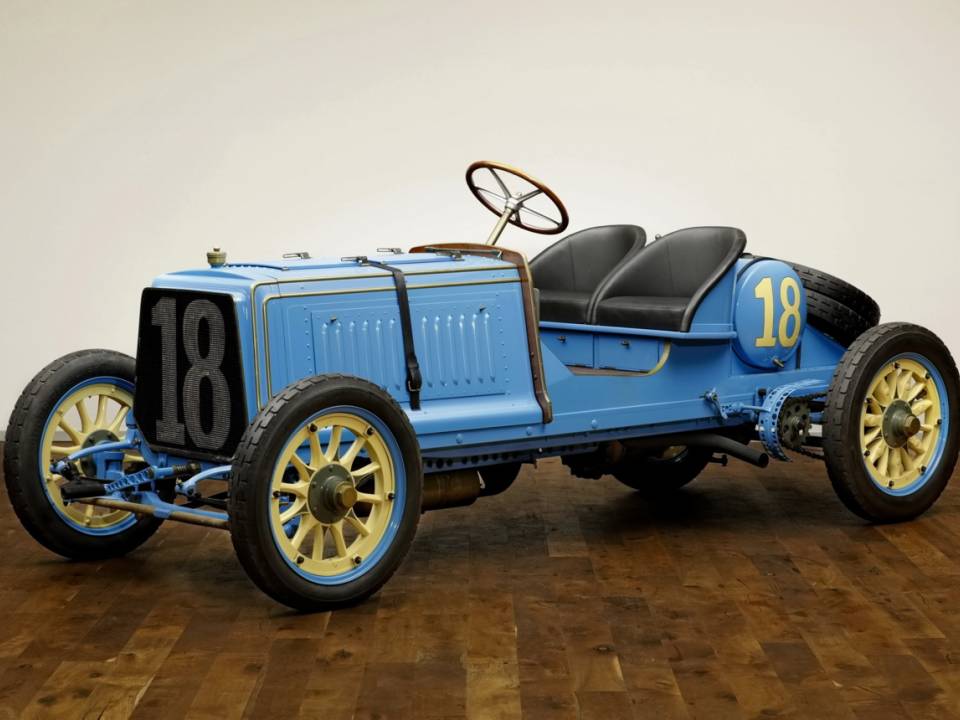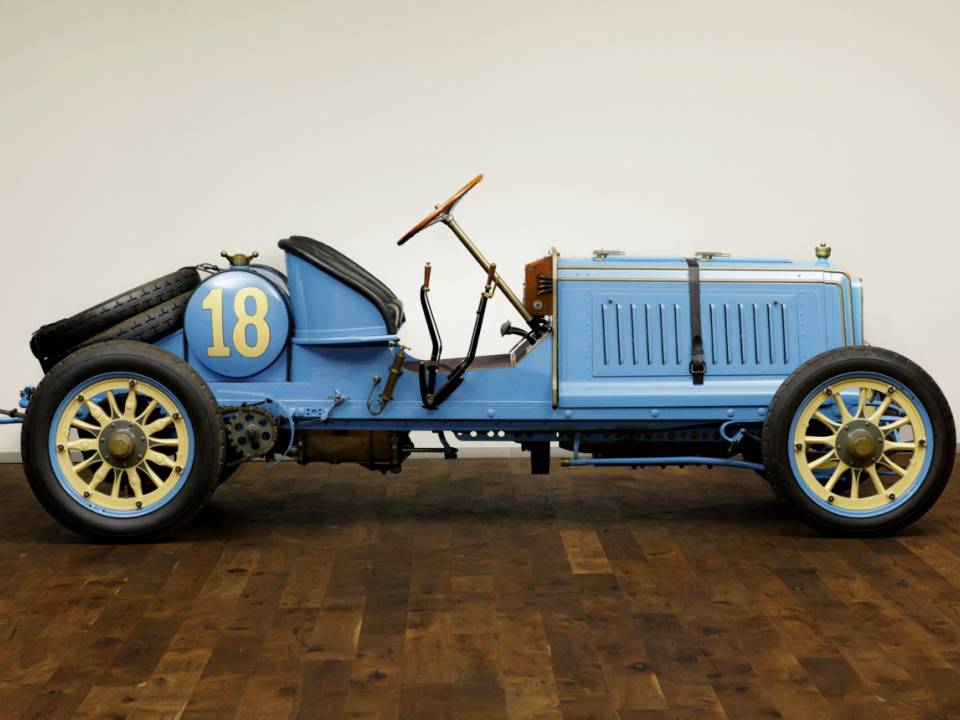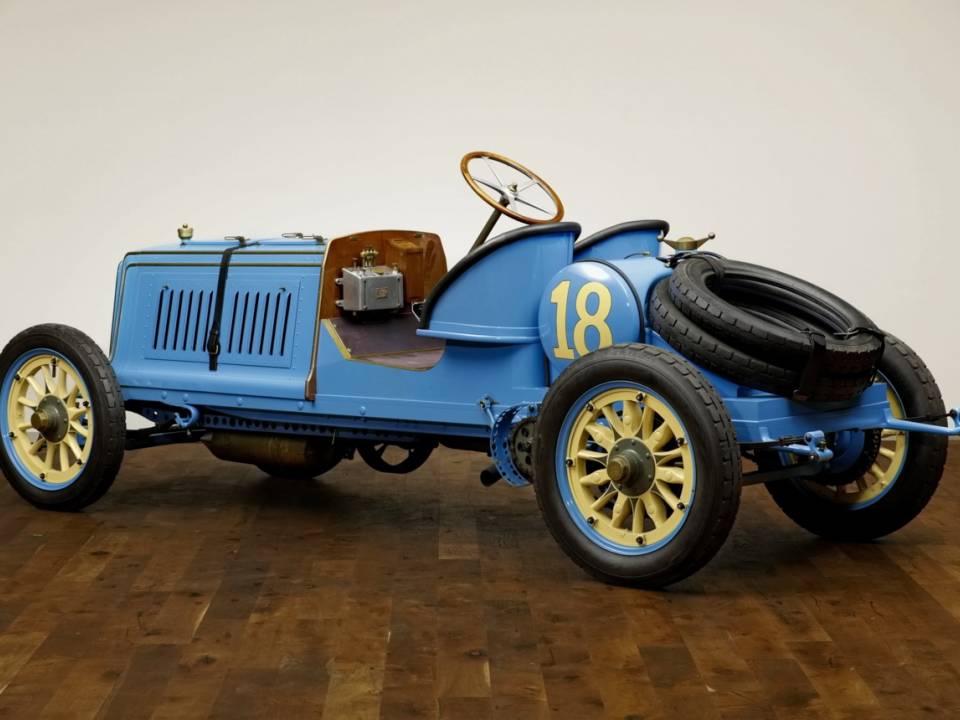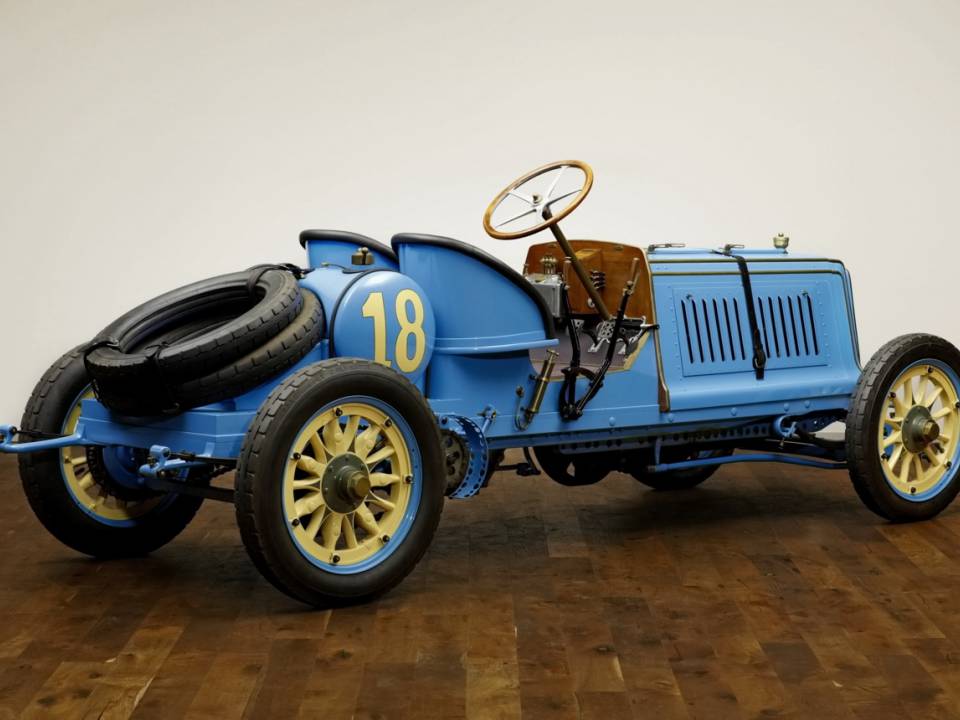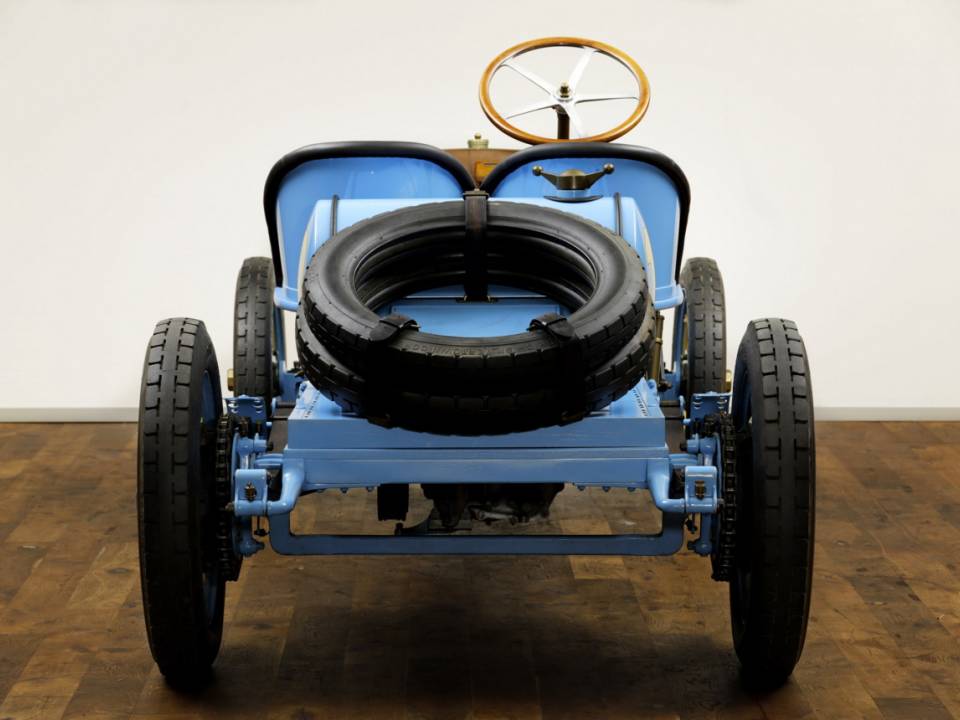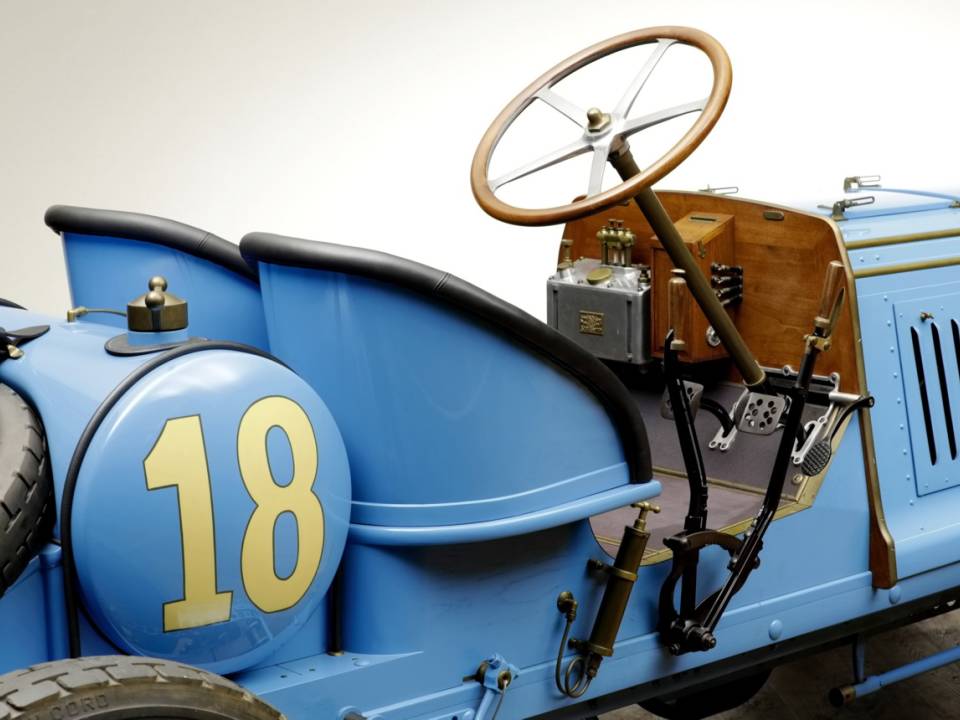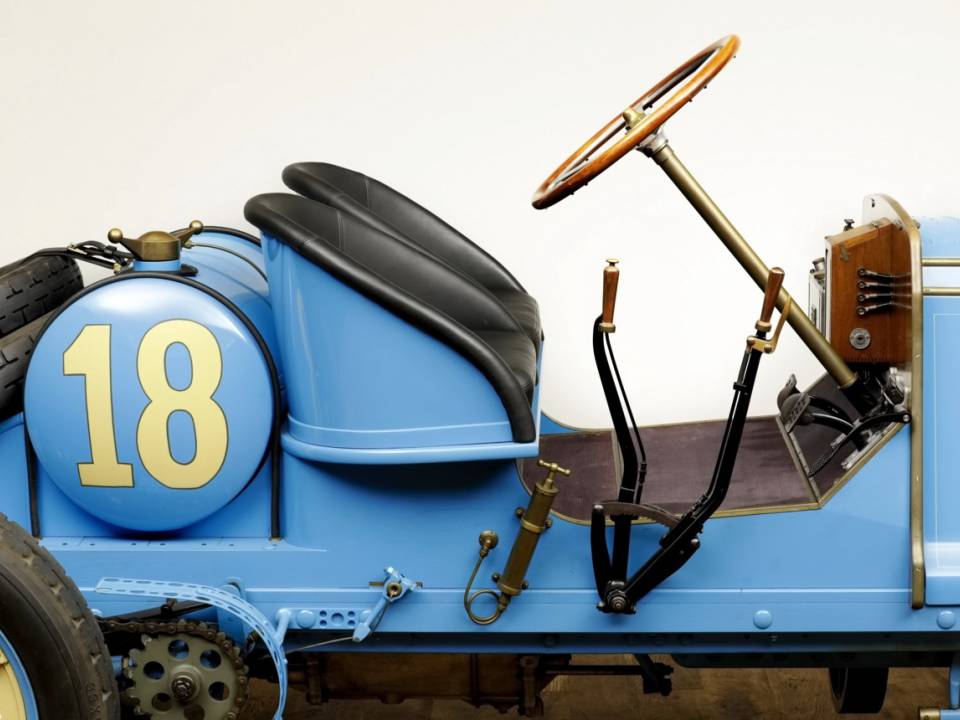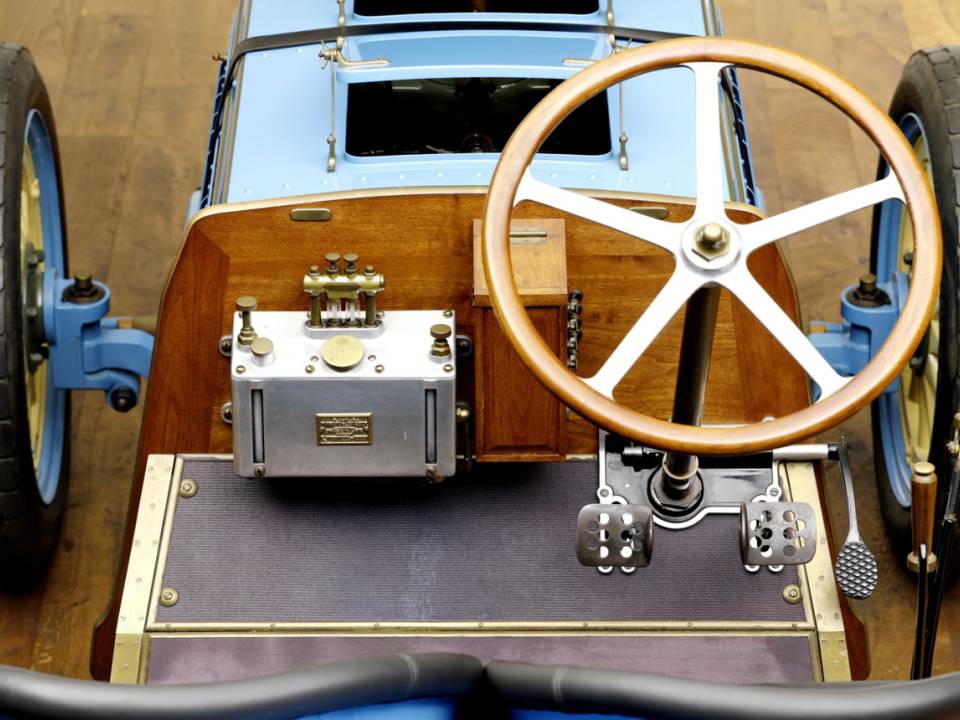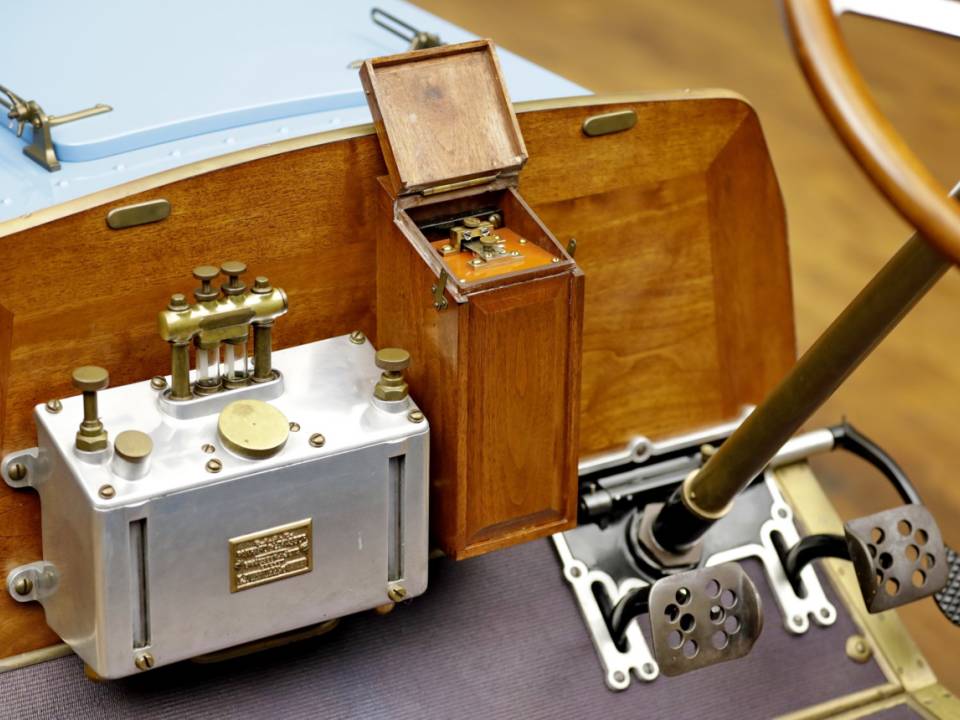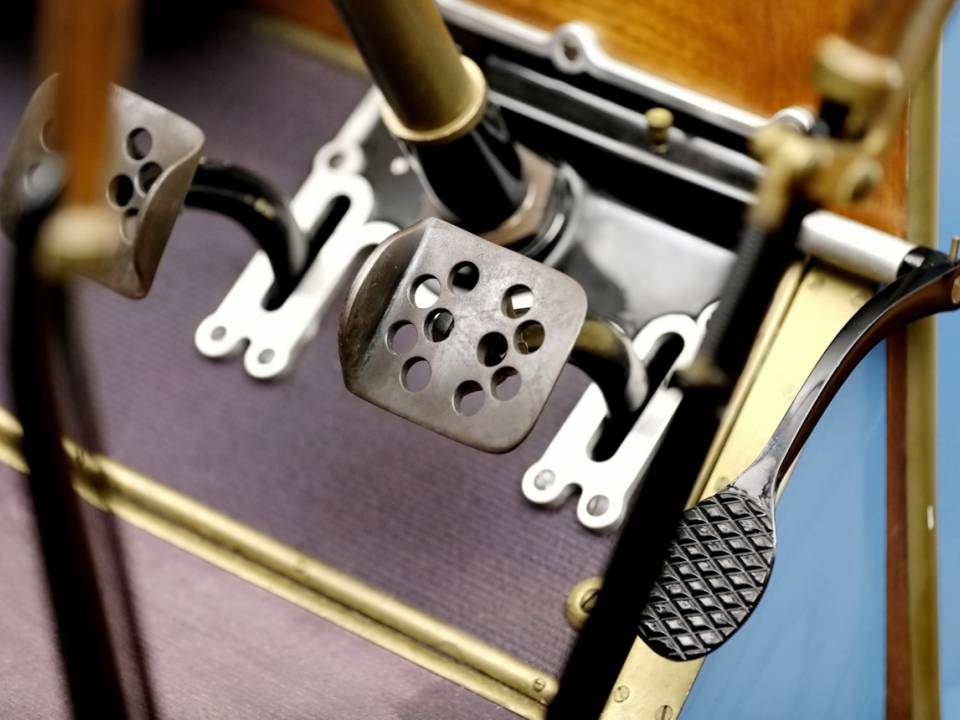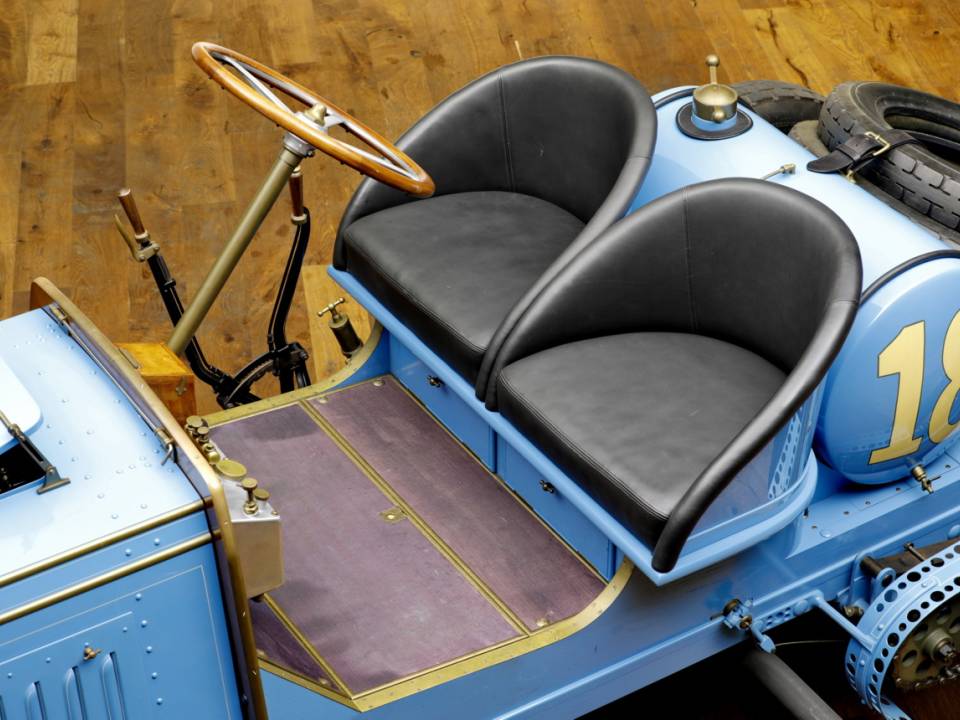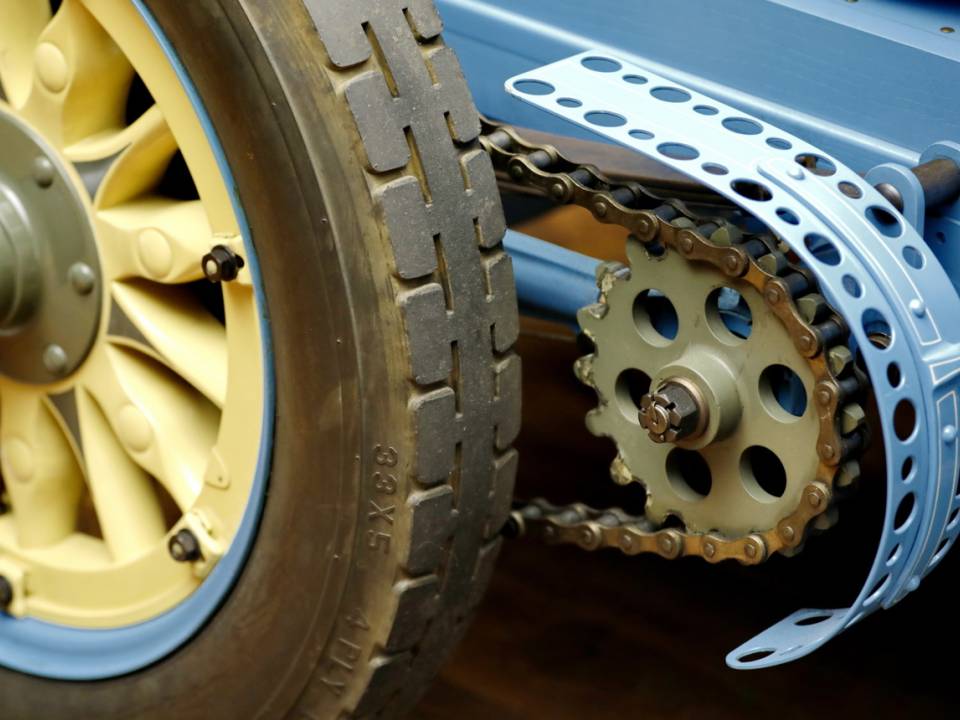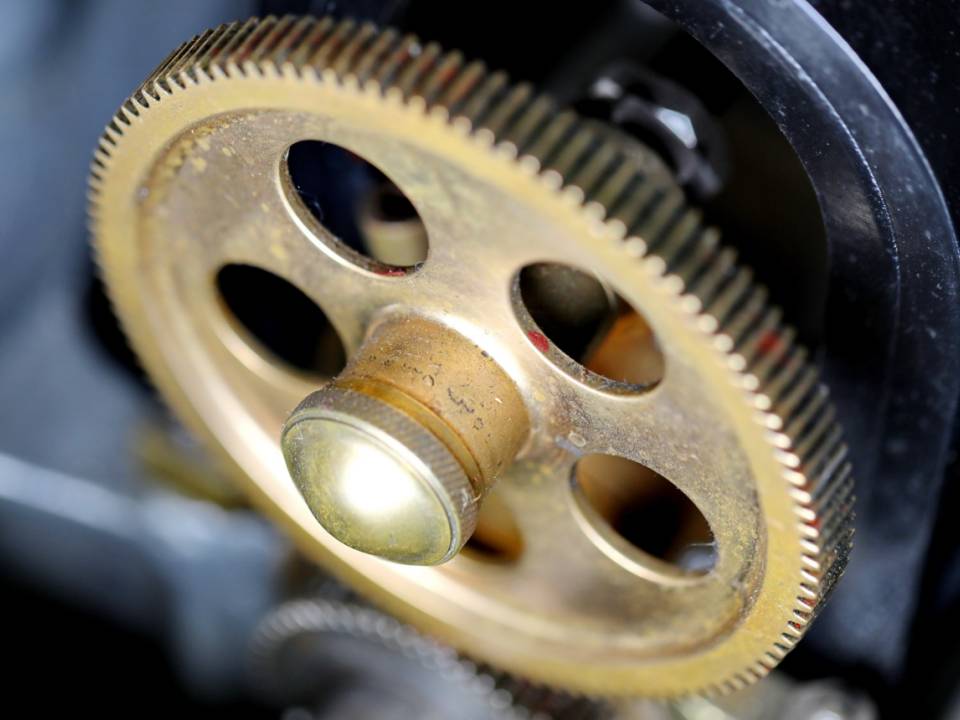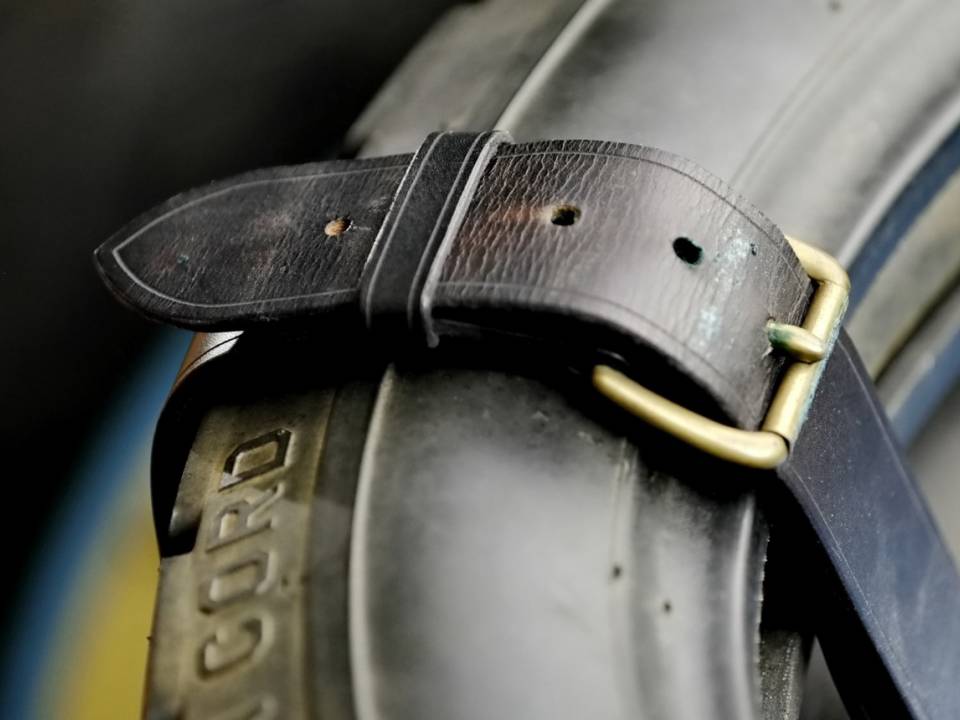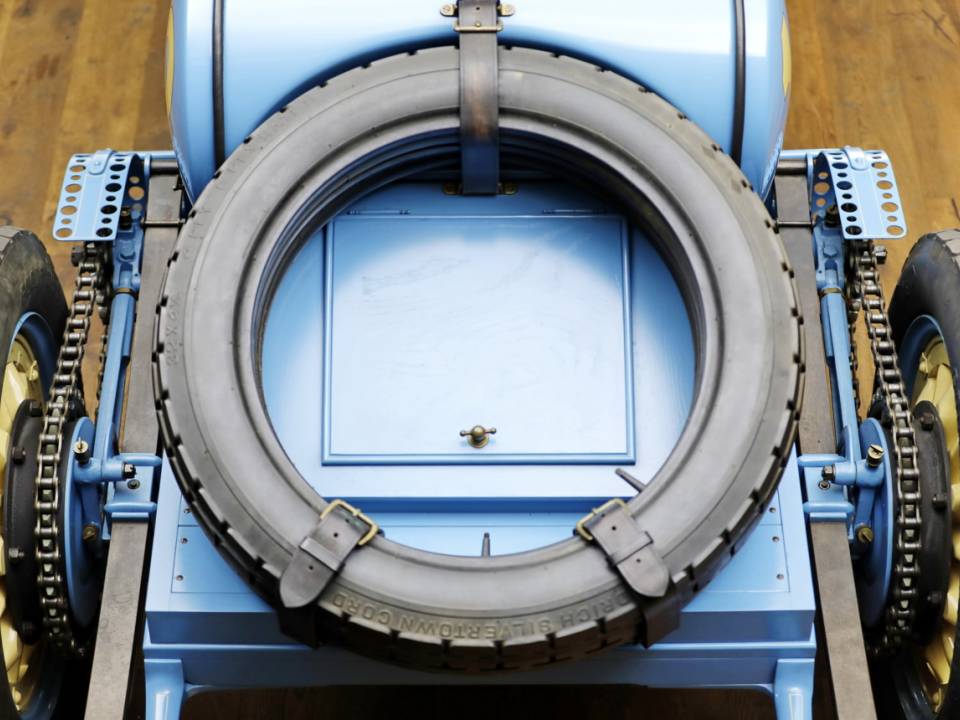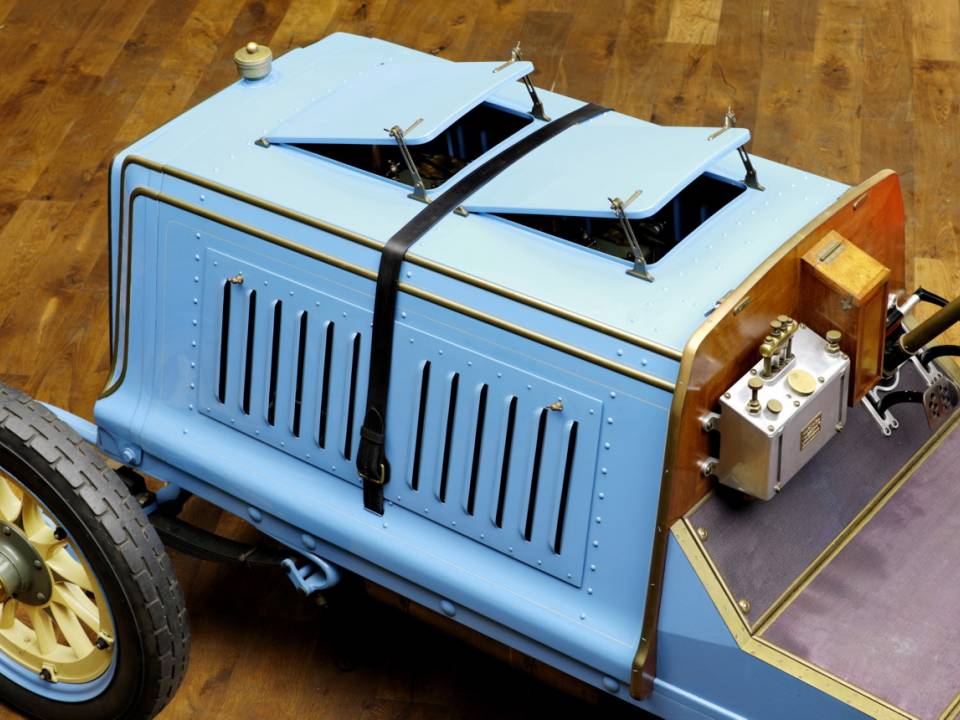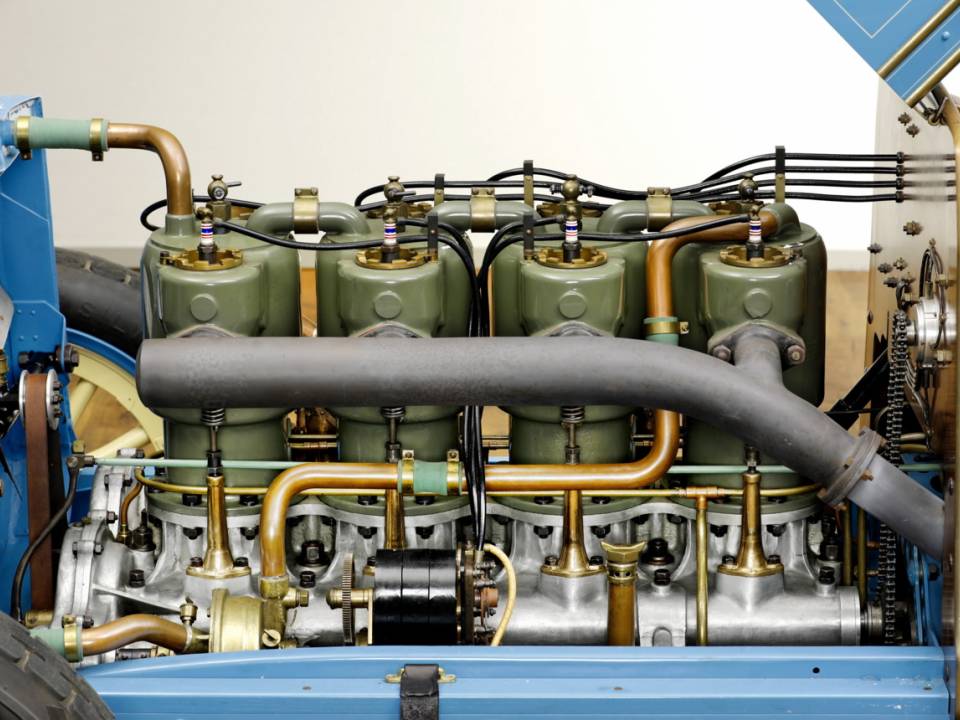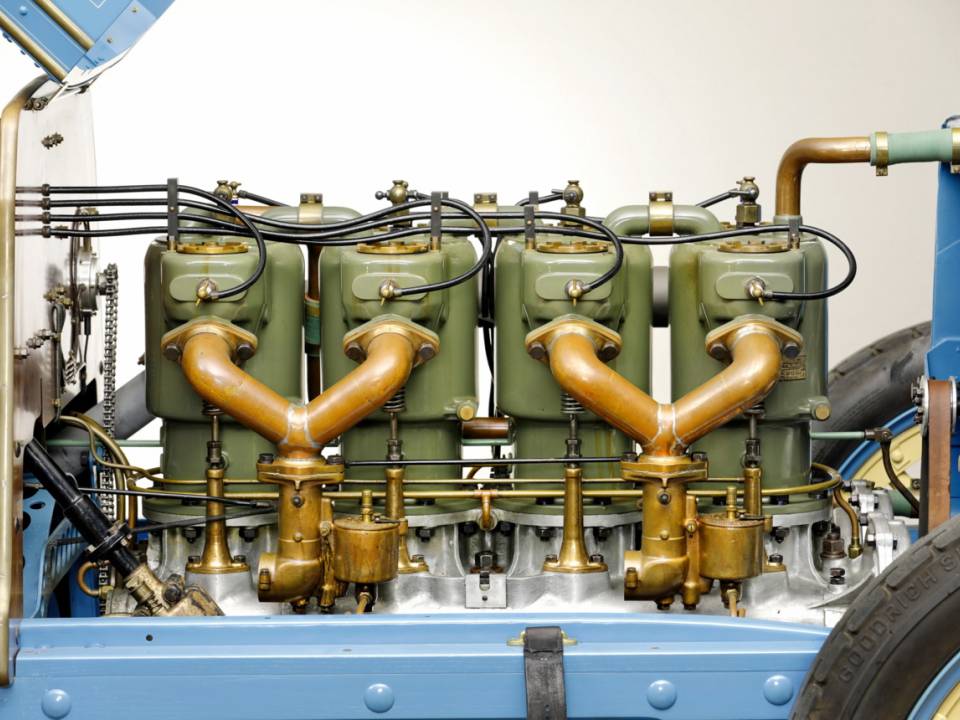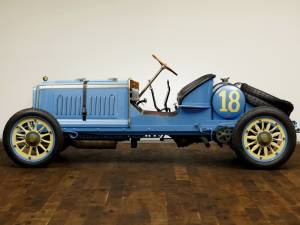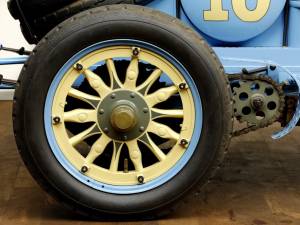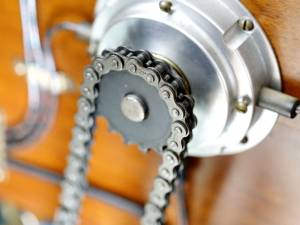1908 | Panhard & Levassor 50 CV
Alle services voor dit voertuig
Beschrijving
- One of about 108 built and only few preserved Type Q cars with chain drive and 10.5 litre capacity and approx. 50 hp
- Racing configuration rebuilt according to original specifications
- Probably original engine
- History partly known, last many years in a Swiss collection
- According to a recent expert analysis, the material of the chassis and body is made of old metals
- Technical work is currently being carried out to make the car functional and drivable again
According to historical production records of Panhard Levassor, this Type Q 50 CV was delivered on 13 April 1908 as a rolling chassis. The Q stands for a chassis with chain drive, as it was (still) common at the time. Equipped with a four-cylinder in-line engine of the type Z4O, which had a capacity of 10,568 cc (!) and an output of 50 hp. A sensational value more than 110 years ago. The car went to the Palais de l'Automobile agency in Paris, which had been selling automobiles since the turn of the century. Nothing is known about a possible first body. Later in 1909, the chassis was fitted with a two-seater purist body in racing car style for competitions. According to research sources, the Panhard was purchased in Paris by Don Pedro Suinaga – a young and wealthy motorsport enthusiast from Mexico. He then hired the professional racing driver Agustin Cazaux from Mexico, who successfully entered the car in numerous races. Cazaux was a close friend of the family of a later owner, as both families came from Jalapa, the capital of the state of Veracruz. The precise earlier chain of ownership cannot be traced exactly. Later, the Panhard presumably came into the possession of a monastery in Mexico City and was equipped with two additional seats in the rear at the time. The car was then discovered by another owner in the 1940s and underwent an initial restoration. In the course of this, it was already restored to its previous version for competitions. The Panhard Levassor remained in this condition until the late 1980s, when the owner had a comprehensive restoration carried out at the well-known specialist Jan Voboril in the USA. The car was returned to its original racing configuration and as many original parts as possible were used, including most of the functional components and the instruments. The car was subsequently exhibited at the 1993 Concours d'Elegance in Pebble Beach, where it won first place in its class. After that, the Panhard was on display at the Petersen Automotive Museum, where it was cared for and maintained for some time. Later, this rare type Q 50 CV came to its last and current owner, a private museum collection in Switzerland, probably in the course of a classic car auction. Currently some technical work is being carried out on the engine side of the car to make it fully functional and drivable again. In addition, a metallurgical material analysis was recently conducted and is available. This expertise confirms that the material used on the chassis and body is made of old metals. The excellent condition as well as the impressive power of 50 hp and the mechanical function of the double chain drive make the fascination of this very early racing car. This Panhard Levassor is particularly suitable for events of the Horseless Carriage and the Veteran Motor Car Club. In addition, it should be a welcome participant in numerous concours events and vintage racing events – including performance-focused speed trials and hill climbs that show such an automobile in function and motion.
The French brand Panhard & Levassor was founded in Paris in 1886 and is considered one of the oldest car manufacturers in the world. The company gained particular attention for its vehicles with Knight pusher engines and the invention of the so-called "Panhard rod". The brand was not only present in the early days of automobile production, but was also one of the pioneers of early automobile racing. Partly because of this reputation, the company's order books were so full that at the time it could take more than 12 months for a new car to be delivered. Panhard & Levassor continued its involvement in racing into the early years of the twentieth century. By that time, other manufacturers had caught up with the top position Panhard Levassor had long held, and the company's racing cars were considered outdated by experts. Nevertheless, the American George Heath managed to win both the race on the Circuit des Ardennes and the Vanderbilt Cup in 1904 at the wheel of a 90 hp Panhard & Levassor. Heath, who was born in Long Island and lived in Paris, was able to continue his winning series in the following years: He finished second in the 1905 Vanderbilt Cup. He also became sixth in the first French Grand Prix in 1906 and ninth in the French Grand Prix in 1908, finishing first for the Panhard & Levassor team. These successes were not winning races, but they were still very respectable in a field of participants made up of the best brands of the time. The Type Q was introduced in 1904/1905. The four-cylinder in-line engine had a displacement of 10½ litres and produced 50 hp. It had water-coated single cylinders made of copper, which were bolted to an aluminium crankcase, cylinder heads made of cast iron and a high-voltage magneto ignition. A combined four-speed gearbox with multi-plate clutch and differential with final drive via side chains was used. The chassis had semi-elliptic springs front and rear and brakes acting on the rear wheels and gearbox. The production cars were similar in almost every respect to the marque's successful 70 and 90 hp racing cars, which had larger engines of 13½ and 15½ litres respectively. The Q-Type was extremely expensive and its price was only surpassed by a few other cars on the French market. For comparison: A four-cylinder Panhard & Levassor with 15 hp cost 11,500 French francs at the time, while the chassis of the Q-Type alone was offered for 25,000 francs. According to research sources, 108 examples of the Q-Type were produced.
Voertuigdetails
Kenmerken
- Merk
- Panhard & Levassor
- Model
- 50 CV
- Eerste registratie
- Niet voorzien
- Bouwjaar
- 1908
- Kilometerstand
- 0 km
- Carrosserienummer
- Niet voorzien
- Motornummer
- Niet voorzien
- Transmissienummer
- Niet voorzien
- Gelijke nummers
- Ja
- Vorige eigenaren
- Niet voorzien
Technische details
- Carrosserie detail
- Cabriolet (Raceauto)
- Vermogen (kW/pk)
- 37/50
- Cilinderinhoud (ccm)
- 10568
- Cilinders
- 4
- Deuren
- 0
- Stuur
- Rechts
- Versnellingsbak
- Manueel
- Versnellingen
- 4
- Transmissie
- Achterkant
- Remmen voor
- Geen
- Remmen achter
- Geen
- Brandstof
- Benzine
Individuele configuratie
- Kleur
- Blauw
- Kleurbeschrijving van fabrikant
- French Racing Blue
- Interieurkleur
- Zwart
- Interieur materiaal
- Leder
Conditie en registratie
- Conditie categorie
- Gerestaureerd
- Heeft inspectierapport
- Conditie
- Inspectierapport bestellen
- Toegelaten
- Rijklaar
Lokatie
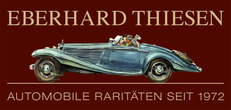
Eberhard Thiesen GmbH & Co. KG
Eberhard Thiesen
Tarpen 40 - Halle 12
22419 Hamburg
🇩🇪 Duitsland
